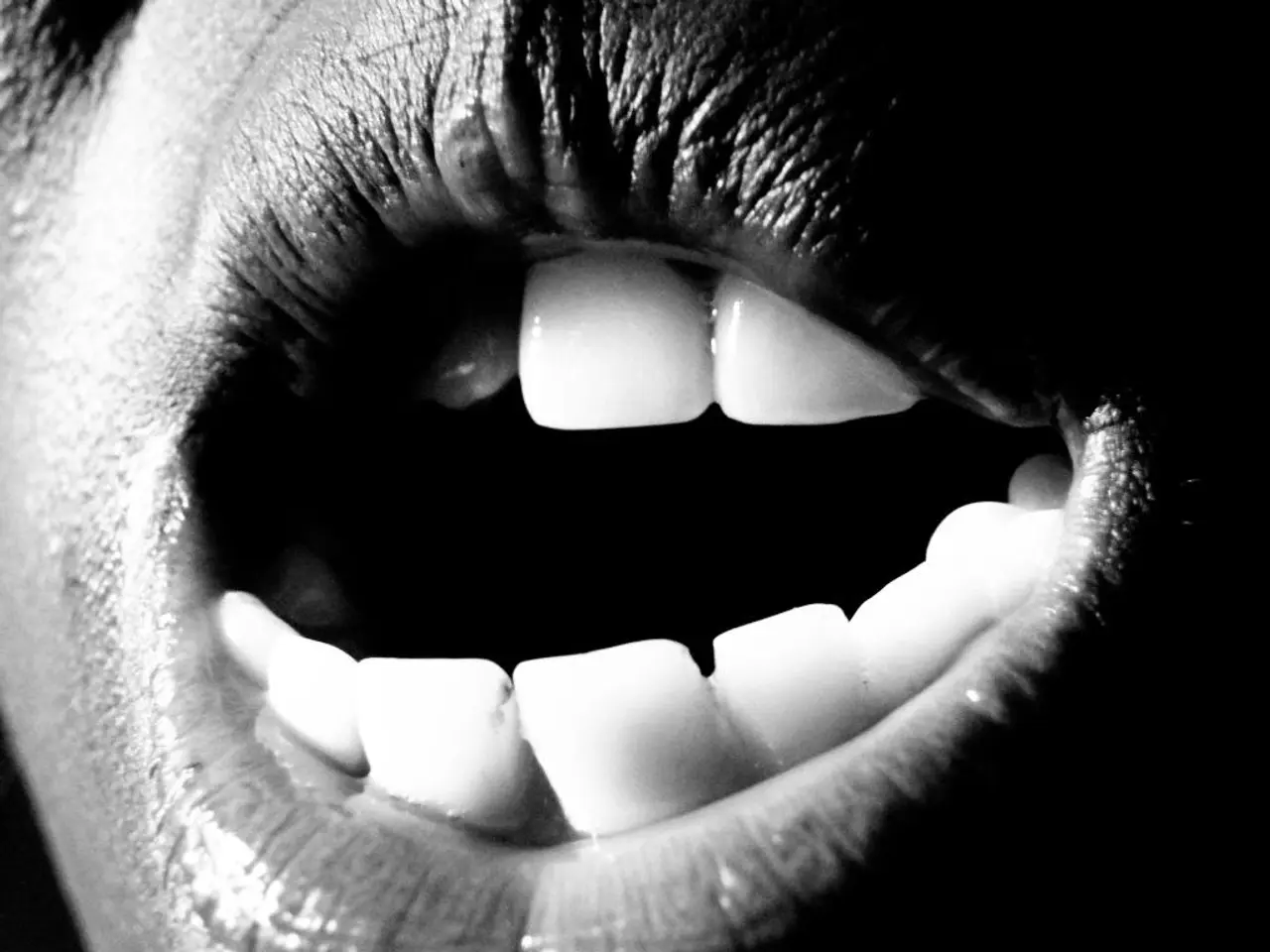Exposing the Reality of Teeth Whitening: Debunking Myths, Revealing Facts, and Addressing Potential Hazards
Teeth whitening has become a popular cosmetic dental procedure, aimed at improving the appearance of teeth stained from various factors such as food, drinks, tobacco, and medication. This article explores the most effective and safe methods for teeth whitening, focusing on professional treatments and at-home options.
For Different Types of Tooth Stains
Teeth stains can be classified as surface/extrinsic stains or deeper/intrinsic stains.
- Surface/Extrinsic stains (e.g., from coffee, tea, smoking) respond well to whitening strips, toothpastes, and over-the-counter (OTC) kits with peroxide. Whitening strips apply a low-concentration peroxide gel directly to teeth, while LED kits combine gel and light to boost the effect. These methods remove surface discolorations with minimal sensitivity risk.
- Deeper/Intrinsic stains (e.g., from trauma, medication) typically require professional whitening by dentists with higher-concentration bleaching agents under supervision, which can penetrate deeper stains safely and more effectively. Custom treatments delivered chairside can whiten teeth several shades in one session.
Most Effective and Safe Methods
| Method | Effectiveness | Safety and Suitability | Ideal For | |--------------------------------|-------------------------------------------|-----------------------------------------------------------|-----------------------------------| | Professional In-Office Whitening | Highly effective, several shades in one visit | Safest due to dental supervision, tailored to your teeth, minimal side effects | Intrinsic stains, quick results, sensitive teeth | | LED Whitening Kits (At-Home) | Moderate, up to ~2 shades in 1 week | Controlled peroxide levels, longer time needed, gentle on gums | Surface stains, mild extrinsic discoloration | | Whitening Strips | Moderate, mainly surface stains | Easy to use but may give uneven results, safe for enamel if used as directed | Coffee/tea stains, smokers, maintenance | | Whitening Pens | Low to moderate, spot treatments | Convenient for touch-ups, not for full whitening, very safe | Fresh spots, minor discolorations |
Safety Notes
- Professional supervision is recommended especially for deeper stains or sensitive teeth, as dentists provide customized care and protect gums properly.
- At-home kits are effective and safe if instructions are followed, but overuse or misuse can lead to sensitivity or uneven whitening.
- People with sensitive teeth, cavities, or gum disease should consult a dentist before whitening.
In summary, professional whitening is the gold standard for both safety and effectiveness, particularly for intrinsic or tough stains. For mild, surface stains, high-quality OTC products like whitening strips, LED kits, or pens offer convenient and safe options with satisfactory results.
Using teeth whitening agents the wrong way can bring many problems, such as sensitivity to hot and cold temperatures, gum irritation, visible light and dark areas, and potential enamel damage and increased tooth decay risk.
Take-Home Trays, customized by dentists using bleaching agents, allow for gradual at-home whitening.
Professional treatments provide results lasting from several months to several years, while over-the-counter solutions need continuous use for maintaining their effects.
Brown or black stains on teeth can result from tobacco and nicotine use. Charcoal for teeth does not have enough proof that it works to clean marks. Quitting smoking and tobacco use can help prevent teeth discoloration.
The color of teeth changes due to external factors such as smoking, dietary choices, and consuming coffee, tea, red wine, and dark-colored sodas. Using fluoride and special toothpaste can make the teeth's outer layer stronger.
Dental crowns may become essential when significant enamel erosion requires correction. Baking Soda and Hydrogen Peroxide might remove superficial stains from teeth, but overuse can destroy enamel. White spots on teeth can be caused by excessive fluoride exposure.
Doing teeth whitening the right way is safe, and getting it done by a dentist is the safest choice. Coconut oil as oil pulling may minimize dental plaque and staining, but extensive clinical studies regarding such benefits are nonexistent.
The most effective form of teeth whitening depends on individual needs and preferences, with professional in-office whitening providing the fastest and most noticeable results, while take-home trays deliver gentle improvements. Tooth whitening strips and toothpaste remain simple approaches to teeth whitening but their effects become apparent more slowly than other methods.
The length of whitening effects depends on individual oral hygiene routines and daily choices. Diagnosing teeth discoloration involves a dental check-up, physical inspection, X-ray examination, and use of a color guide.
Some antibiotics (such as tetracycline) and chemotherapy drugs can contribute to darkening of the internal tissues of teeth. Countless childhood fluoride exposure can lead to enamel appearance of white spots and streaks.
Eating less of foods and beverages that cause staining can help maintain tooth color. Over-the-counter whitening products include strips with a weak bleach, toothpaste with soft rough bits and chemicals to clean off marks, and mouthwash with hydrogen peroxide requiring long-term use to see changes.
Bonding or veneer application may become necessary if teeth stains remain resistant to whitening procedures. Medication and injuries can produce grayish discoloration in teeth.
Using white products right keeps tooth enamel safe from damage. Using straws to drink citrus fluids can reduce the amount of stains teeth encounter.
Sudden teeth discoloration can result from poor teeth cleaning leading to plaque build-up. Regular practice of oral hygiene includes brushing twice a day, flossing regularly, and scheduling routine dental examinations.
- The safety and effectiveness of teeth whitening methods can vary depending on the type and severity of stains. For instance, surface stains from coffee, tea, or smoking can be addressed with over-the-counter whitening strips, toothpastes, or LED kits, while deeper stains may require professional whitening by dentists.
- To maintain tooth health during teeth whitening procedures, it's essential to follow safety notes such as consulting a dentist before whitening for sensitive teeth, cavities, or gum disease, and avoiding overuse or misuse of at-home products, which could lead to sensitivity or uneven whitening.




